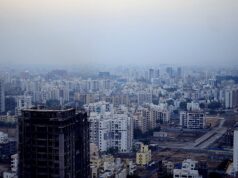Air quality has become a major issue in many regions of India, particularly in developing urban landscapes with high levels of industrial activity, vehicle traffic, and population density. However, challenges with air pollution vary from city to city. Some Indian cities are blessed with relatively clean air; many factors contribute to abundant foliage, favourable geographic location, and less industrial activity, plus environmental policies. Residents and travelers have healthy and fresh air in this cities.
1. Mysuru (Karnataka)
Mysuru, known as the “Cultural Capital of Karnataka,” has clean and fresh air and this attracts admiration. The public infrastructure (wide roads, greenery, and cleanliness) has mostly contributed to Mysuru being classified among the cleanest cities in India. Moreover, Mysuru has fewer industries than larger metros and, therefore, much less pollution to contend with. This makes Mysuru a wonderful place to live and to visit.
2. Shimla(Himachal Pradesh)
Shimla’s location in the Himalayas plays a major role in its clean air, and the natural circumstances are supported by the pine forests, cool climate, and altitude; they contribute to smaller particle concentration of dust, and pollutants, as would be found in lower areas. With ever-increasing annual tourist population, Shimla is very popular as a hillstation, and because it represents an escape from the polluted plains that encircle the city. Traffic management, increasingly regulating factories and transport also helps Shimla keep its clean status in India, among the other cities.
3. Shillong (Meghalaya)
Known as the “Scotland of the East,” enjoys fresh mountain air and rich greenery – combination of hill city and frequent rain means that pollutants will almost unavoidably spread far away and fast – which ordinarily keeps air quality high. Enclosed by cascading waterfalls, and hills has a picturesque environment, and would qualify as one of the cleanest, and most refreshing places in India.
4. Aizawl (Mizoram)
Aizawl is the capital of Mizoram, and its geographical location means that there is clean and fresh air largely because of its hilly terrain and low levels of industrial activity. Located on elevated ground, pollutants are dispersed away thanks to wind patterns. The population density is much lower than that of larger cities which creates more room for air circulation and better air quality to be maintained.
5. Gangtok (Sikkim)
Gangtok is one of the country’s cleanest and environmentally friendly cities. The state of Sikkim has taken serious steps to become sustainable, banning the use of plastic bags and an emphasis on organic agriculture. There are also mountains and forests surrounding the city which can largely contribute to Gangtok’s fresh and uncontaminated air from heavy industrial type pollutants. It has also maintained its air quality by focusing on eco-tourism, in addition to its surrounding mountains and forests.
6. Pondicherry (Puducherry)
Pondicherry has a coastal location with a sea breeze that helps in the dispersal of air, thus keeping pollution lower. Known for its tranquil beaches, French colonial architecture, and for a more laid-back lifestyle, it has reduced industrial estate, leading to generally healthier air quality than many cities.
Conclusion
With pollution ongoing challenges for a number of regions in India, cities like Mysuru, Shimla, Shillong, Aizawl, Gangtok, and Pondicherry can be seen as examples of places were natural forces and proactive sustainable decisions combine to create oxidized air quality. Cities with the added opportunity for visitors to easily escape polluted urbanized areas. As India is advancing in its path towards sustainable development, so are the cities mentioned in this report doing so while maintaining care for their environments. They further demonstrate that cities can grow and develop with care towards nature.







